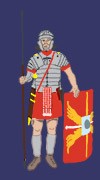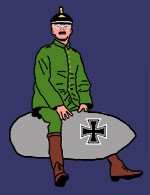
History of Belgrade
Belgrade is located in the south-east Europe on the confluence of two great rivers, Danube and Sava. By three sides, the city is surrounded by water, therefore, since the dawn of history Belgrade has been the guardian of the river passages. Belgrade is the capital of the Republic of Serbia and according to population census in 2011. it is a home to 1.65 million people. Throughout the history, Belgrade paid its glory in blood, since it is a city for which the largest number of battles has ever been fought in the history of mankind, as well as the city with the largest number of symbolic names by which it has been called by all these conquerors.
The remains of the settlements that date from the period of more 5,000 years before Christ were found on the territory of the city. This testifies that this area was continuously inhabited for more than 7,000 years.
Singidunum, the most well-known name of the city apart from Belgrade, is associated with the Celtic tribe Scordisci. The fortified town Singidunum was mentioned for the first time in 279 BC. The origins of the name come from two words Singi (round) and dunum (city, fortification). Until this day the remains of these fortifications have not been found. However, only a few necropolises with valuable objects that belonged to warriors of Scordisci tribe, have been discovered in Karaburma (a part of Belgrade), confirming that the city actually existed.
 Romans conquered the city in the first century AD and built their fortification in the upper city (on Kalemegdan). The remains of these fortifications can still be seen today. Romans ruled on this area for 4 centuries, during which the city continually gained on importance as a fortified city on the border of the Empire. In Belgrade, even one of the Roman Imperators Julian (Flavious Claudius Iulianus Augustus) was born. Impressive Roman architecture can be observed even today. A few streets, such as Uzun Mirkova, Dušanova and Kralja Petra I, have a characteristic architecture of Roman streets that intersect at a right angle, while the rectangle shape of the Student square (Studentski trg) comes from the form of a Roman forum that was once located right in this location.
Romans conquered the city in the first century AD and built their fortification in the upper city (on Kalemegdan). The remains of these fortifications can still be seen today. Romans ruled on this area for 4 centuries, during which the city continually gained on importance as a fortified city on the border of the Empire. In Belgrade, even one of the Roman Imperators Julian (Flavious Claudius Iulianus Augustus) was born. Impressive Roman architecture can be observed even today. A few streets, such as Uzun Mirkova, Dušanova and Kralja Petra I, have a characteristic architecture of Roman streets that intersect at a right angle, while the rectangle shape of the Student square (Studentski trg) comes from the form of a Roman forum that was once located right in this location.
After the fall of the Western Roman Empire, Belgrade was often the target for barbarian tribes (Eastern Goths, Avars, Gepids etc.) In 441 AD, Huns conquered and completely destroyed the city, while in 454 the city was in hands of Byzantines. Afterwards, it was conquered by Saramati tribe, Estern Goths, while again in 488 it ended up again in the hands of Byzantine. In the 7th century, the city was taken by Avars and Slavs and in that period the name Singidunum disappeared. The name Belgrade or Beograd (beo-white, grad- city) for the first time appeared in the letter of Pope John VIII addressed to the Bulgarian prince Boris-Mihailo in the 9th century. Unfortunate destiny of the city continued as it was conquered by Franks, Bulgarians and Hungarians. In the 11thcentury, the city again fell under Byzantine while afterwards it changed the owner between Hungary, Byzantine and Bulgaria.
In the 15thcentury, Ottoman Empire (Turks) broke into these lands. After the fall of Smederevo in 1440, Turks were trying to conquer Belgrade almost for a century. They succeeded only in 1521 under the lead of Sultan Suleiman the Magnificent. After Turks failed to conquer Vienna, Belgrade changed hands between Turks and Austrians. In this period, the city was destroyed and rebuilt many times over by both Austrians and Turks. The city was built in European style in one period and in oriental in the other and consequently both churches or mosques were built. Finally, the last straw was the execution of prominent Serbians organized by the Turks, which ultimately led to rebellion and the first Serbian uprising.
 Under the leadership of Karadjordje Petrovic the city was liberated in 1807 and afterwards became the capital of the liberated territory. The city slowly started to develop, Serbian rule was implemented, the first ministries formed and the first schools were built. In 1813, the city fell under the Turkish rule again and due to the ferocity of the oppressive measures, the second Serbian uprising was raging already in 1815, this time under the leadership of Miloš Obrenović. Miloš managed to introduce much more diplomacy into the relationship with Turks, resulting in an increase in numbers of Serbian families in Belgrade.The number of Turks in the city started to diminish to the extent that Turks were only in control of Belgrade Fortress. In 1867, even the fortress was liberated.
Under the leadership of Karadjordje Petrovic the city was liberated in 1807 and afterwards became the capital of the liberated territory. The city slowly started to develop, Serbian rule was implemented, the first ministries formed and the first schools were built. In 1813, the city fell under the Turkish rule again and due to the ferocity of the oppressive measures, the second Serbian uprising was raging already in 1815, this time under the leadership of Miloš Obrenović. Miloš managed to introduce much more diplomacy into the relationship with Turks, resulting in an increase in numbers of Serbian families in Belgrade.The number of Turks in the city started to diminish to the extent that Turks were only in control of Belgrade Fortress. In 1867, even the fortress was liberated.
 The beginning of the First World War was marked with Austro-Hungarian attack on Serbia. Austro-Hungarians captured Belgrade on the December 22nd, 1914 after a four month long bombardment of the city. Enemy forces stayed in Belgrade only for 13 days after which they had to retreat under the counter attack of Serbian forces. Belgrade again fell in the hands of enemy on October7th 1915, after the continuous bombardment that lasted for 7 days and 7 nights. Serbian forces managed to finally liberate the city on November, 1st 1918.
The beginning of the First World War was marked with Austro-Hungarian attack on Serbia. Austro-Hungarians captured Belgrade on the December 22nd, 1914 after a four month long bombardment of the city. Enemy forces stayed in Belgrade only for 13 days after which they had to retreat under the counter attack of Serbian forces. Belgrade again fell in the hands of enemy on October7th 1915, after the continuous bombardment that lasted for 7 days and 7 nights. Serbian forces managed to finally liberate the city on November, 1st 1918.
 During the Second World War, Belgrade was bombarded on 6th and 7thApril by Nazi Germany. During this attack a large part of the city was completely destroyed together with the National library. Like it was not enough, the city was again bombarded in spring of 1944 this time by the Ally forces. Belgrade was finally liberated on October 20th 1944 by joined forces of Red Army and Yugoslavian army.
During the Second World War, Belgrade was bombarded on 6th and 7thApril by Nazi Germany. During this attack a large part of the city was completely destroyed together with the National library. Like it was not enough, the city was again bombarded in spring of 1944 this time by the Ally forces. Belgrade was finally liberated on October 20th 1944 by joined forces of Red Army and Yugoslavian army.
In 1999, NATO aggression on Serbia began which lasted for 78 days. In this bombardment were damaged or destroyed: army and infrastructural targets (bridges, railways, roads etc) but also schools, hospitals, TV stations, cultural monuments and most of Serbian industry. According to some estimates, between 1,200 and 2,500 people were killed. This proud city and a continuous target of aggressors still bears the marks of the last such event, which can still be seen in Kneza Milosa Street.
Did you know?
In 1938, during the construction of the Palace of Albania in the center of Belgrade, the skeleton of a Neanderthal man was found – it is assumed this person died fighting with a mammoth. The skeleton of a mammoth was also found right next to the man.
According to British sources, Belgrade is the city for which the largest number of battles has ever been fought in the history of mankind. Belgrade was conquered by Celtic tribe Scordisci, Byzantine, Gepidi, Saramati, Eastern Goths, Slavs, Avars, Franks, Bulgarians, Hungarians, Turks, Austrians, Germans etc.
These conquerors also gave different names to the city: Singidunum, Nandor, Fehervar, Nandor Alba, Alba Greaca, Grieschisch Weisenburg, Alba Bulgarica, Taurunum etc, till 1941, when for the last time the name was changed to Prince Eugenburg, ordered by Nazi Germany. Belgrade is also the leader in the number of symbolic names by which it was called: Hill of combat and glory, Hill for thinking, House of Wars, Rumelian Misir, House of freedom, Gate to the East, Gate to the West etc.
This often neglected European tourist destination has lots to offer. Its perfect location at the mouth of two large rivers has always drawn not only those in pursuit of a better life, but an incredible number of conquerors as well. This is the city over which the highest number of battles seem to have been fought in the history of mankind and the city with the largest number of names given by all manner of invaders. Though the city has been destroyed and rebuilt over and over again, leaving the impression that there seems to be no end to this vicious circle, today Belgrade is the city of many hidden gems and apparently one of the best nightlife experiences in Europe.
Zlatibor is a beautiful mountain in Serbia, often visited by domestic and foreign tourists for its enchanting nature, limpid and pristine landscape, fresh and crispy air, delicious local cuisine and generally healing properties of the mountain. Exactly because of these features, parents tend to more often than not take children to Zlatibor. However, apart from the famed fresh air and enjoyable walks, keep in mind that there is also lot to be seen and visited while there.
Uzice is located in western Serbia, on the banks of the Djetinja River. Uzice is a hometown of Ljubomir Simovic (writer), national hero Slobodan Penezic Krcun, Mitar Tarabic (writer of Kreman prophecy), athleticist Oliver Jeftic, football player Nemanja Vidic, Radomir Antic (football coach) and many other famous Era, as the locals from Uzice call themselves.
Tara is a mountain located in Western Serbia. The mountain is part of the Dinaric Alps. This mountain is surrounded by the Drina river canyon, and its slopes lead into the valley of the Đetinja river, which is adjacent to the Zlatibor Mountain. Tara is one of the Starovlaško-Raška mountains and is formed out of three separate sections, divided by valleys, slopes and river beds. Scientists estimate that the northern side of the mountain was once a shore of the Pannonian Sea, which is confirmed by limestone sediment present in the northern section of the mountain. Most of the mountain, the average height of which is between 1000 and 1200 meters, is actually limestone.